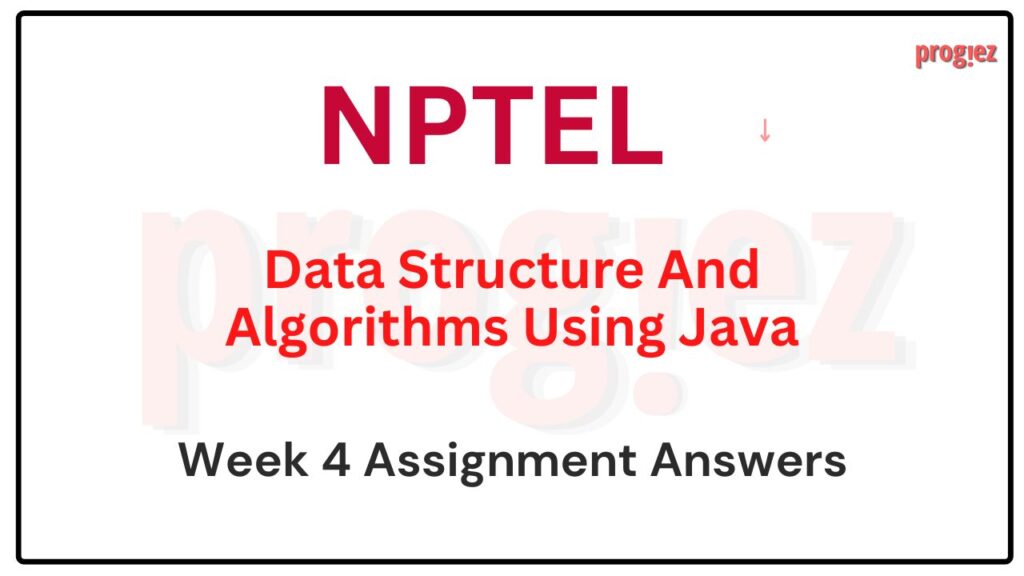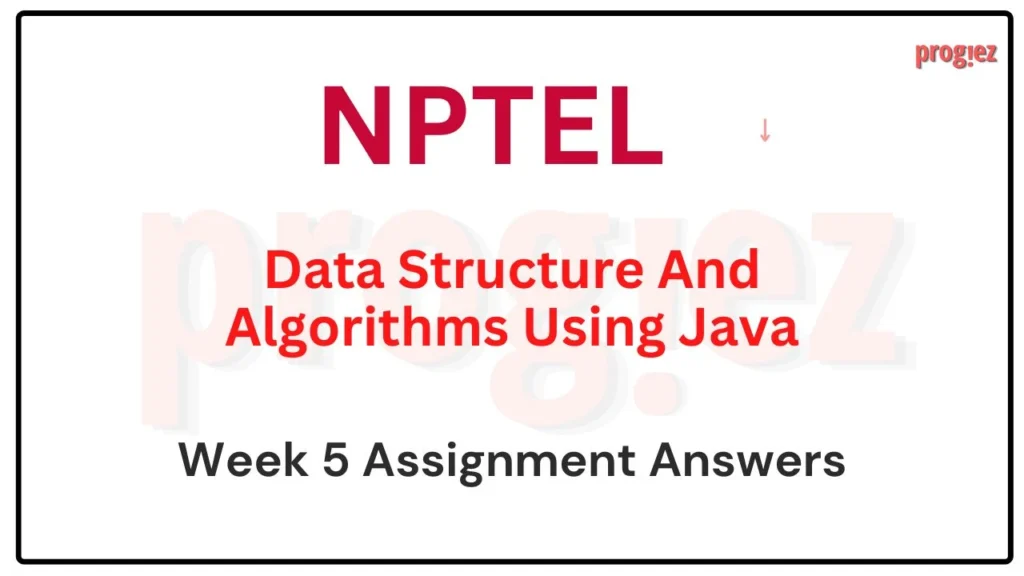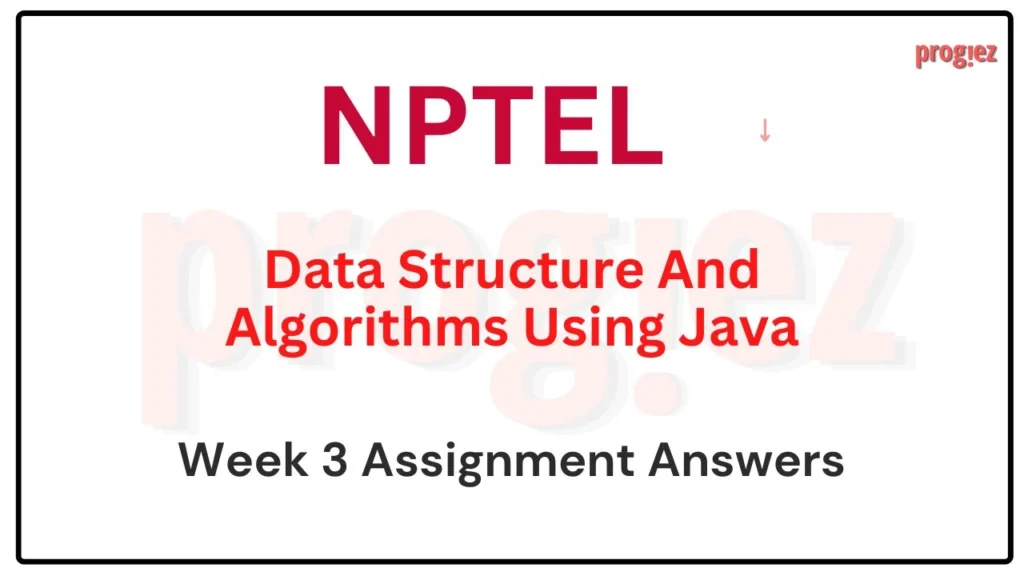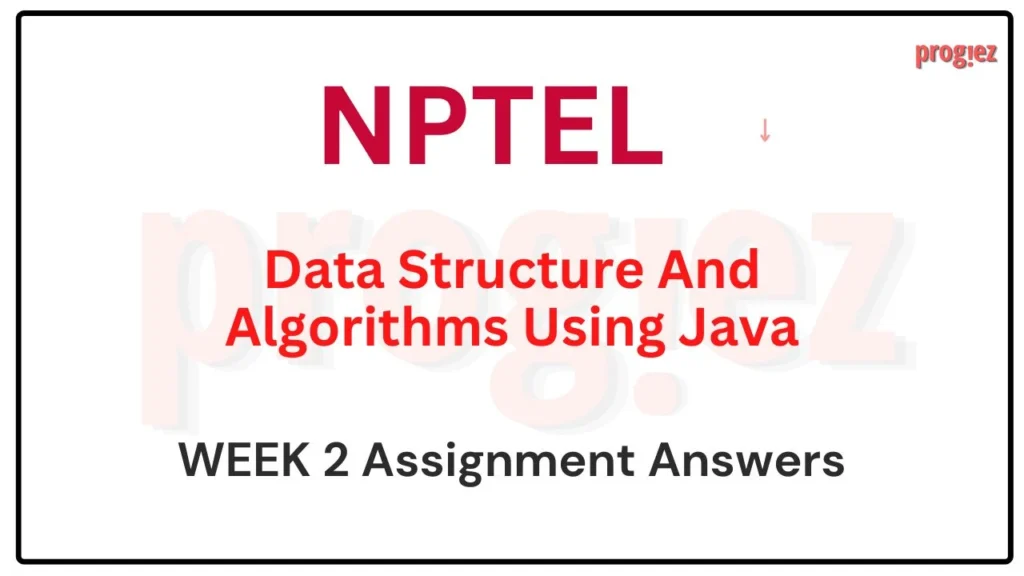Data Structure and Algorithms using Java Week 8 Nptel Answers
Are you looking for the Data Structure and Algorithms using Java Week 8 Nptel Answers 2024 (July-Dec)? You’ve come to the right place! We provide accurate and detailed solutions to help you with your Week 8 assignments in this course.
Course Link: Click Here
Table of Contents
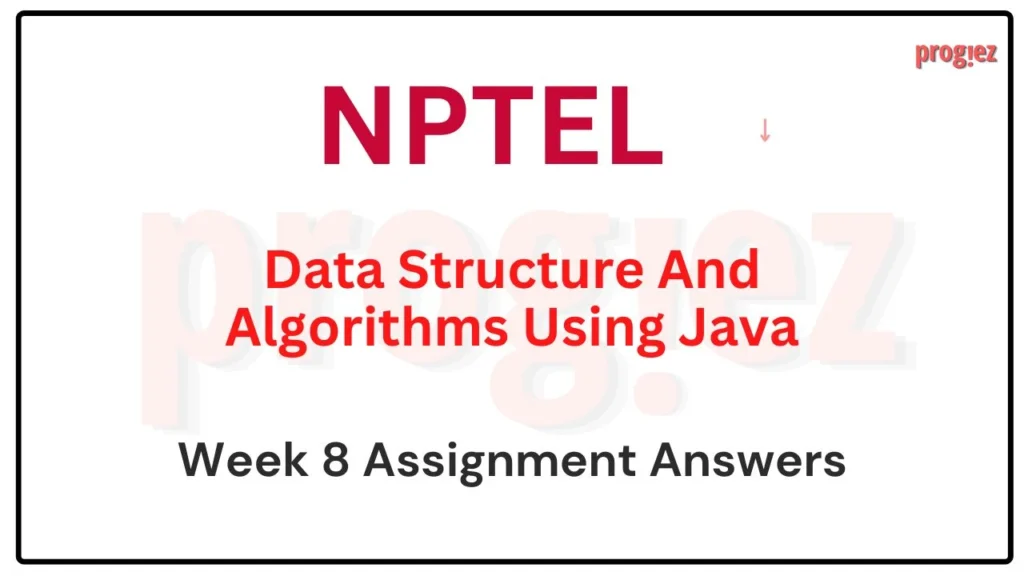
Data Structure and Algorithms using Java Week 8 Nptel Answers
- Which of the above statement(s) is(are) true?
A) Only statements 1, 2, 3, 4 are true
B) All statements except 1, 2, 3, 4 are true
C) All statements are true
D) Only statements 7, 8, 9, 10 are true
Answer: C) All statements are true
- When you attempt to retrieve a value from a HashMap using a key that does not exist, which of the following statements is correct?
A) It returns null.
B) It throws a NoSuchElementException.
C) It throws a NullPointerException.
D) It’s essential to check for null to avoid potential NullPointerExceptions in your code when dealing with HashMaps.
Answer: A) It returns null.
D) It’s essential to check for null to avoid potential NullPointerExceptions in your code when dealing with HashMaps.
- Consider an adjacency matrix (M) representation for a simple unweighted graph having V vertices. What is the maximum number of non-zero entries possible in M?
A) V * V
B) V * (V – 1)
C) (V * (V + 1)) / 2
D) V * (V + 1)
Answer: B) V * (V – 1)
- Consider a weighted, directed graph with V vertices and E edges. Which data structure is/are not typically suitable for efficiently finding the shortest paths between all pairs of vertices?
A) Adjacency matrix
B) Priority queue
C) Stack
D) Hash table
Answer: C) Stack
D) Hash table
- Which Java Collection is commonly used to represent a graph as an adjacency list?
A) ArrayList
B) HashMap
C) TreeMap
D) HashSet
Answer: B) HashMap
These are Data Structure and Algorithms using Java Week 8 Nptel Answers
- Which of the following statement/s is/are true in the context of retrieving a value from a HashMap in Java? (assuming a good hash function and a reasonably low load factor)
A) The time complexity of retrieving a value from a HashMap is O(1)
B) The time complexity of retrieving a value from a HashMap is O(log n)
C) The time complexity of retrieving a value from a HashMap is O(n)
D) The time to retrieve a value from HashMap does not depend on its size.
Answer: A) The time complexity of retrieving a value from a HashMap is O(1)
These are Data Structure and Algorithms using Java Week 8 Nptel Answers
- Which of the following statements about HashMap in Java is correct?
A) HashMap allows duplicate keys but not duplicate values.
B) HashMap allows duplicate values but not duplicate keys.
C) Attempting to put a duplicate key with a different value will keep the previous value associated with that key.
D) Attempting to put a duplicate key with a different value will overwrite the previous value associated with that key.
Answer: D) Attempting to put a duplicate key with a different value will overwrite the previous value associated with that key.
- When implementing a breadth-first search (BFS) algorithm on a graph, what data structure is typically used to keep track of vertices in the order they are visited?
A) Stack
B) Queue
C) Heap
D) Linked list
Answer: B) Queue
- In the context of data structures, what is the primary purpose of an adjacency matrix?
A) To store the values associated with vertices in the graph.
B) To efficiently represent and store the relationships between vertices in a graph.
C) To determine the degree of a vertex in the graph.
D) To find the shortest path between two vertices.
Answer: B) To efficiently represent and store the relationships between vertices in a graph.
- In the context of graph traversal, what is the time complexity of determining whether a graph is bipartite using depth-first search (DFS)?
A) O(V)
B) O(V × E)
C) O(V²)
D) O(E + V)
Answer: D) O(E + V)
These are Data Structure and Algorithms using Java Week 8 Nptel Answers
Want all Weeks of Data Structure and Algorithms using Java Nptel Assignment Answers : Click here
For answers to additional Nptel courses, please refer to this link: NPTEL Assignment Answers

